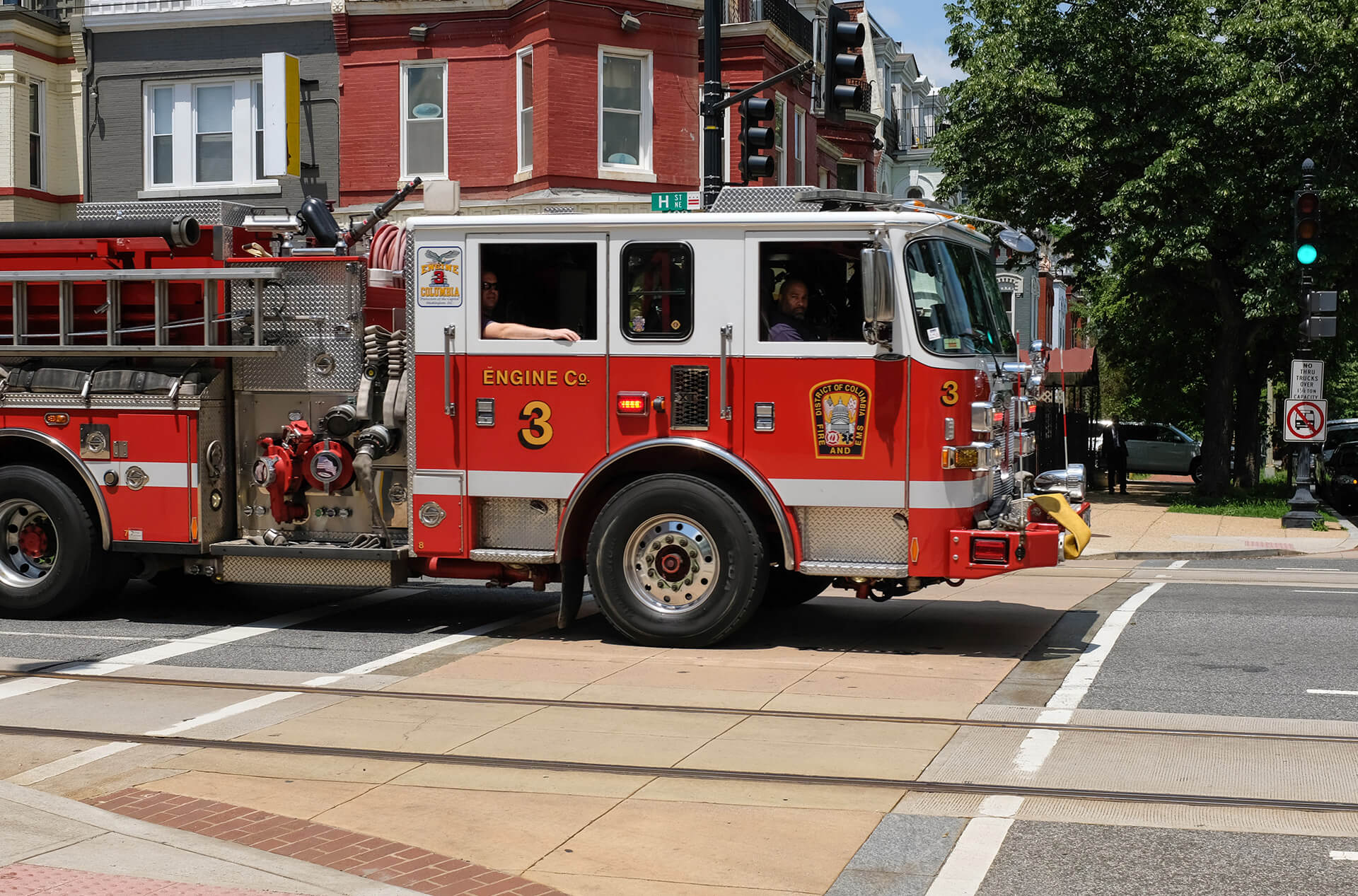Hearing loss, the third-most common chronic physical condition in American adults, can significantly affect the quality of life and productivity. Approximately 15% of Americans between the ages of 20 and 69 have high-frequency hearing loss (National Institutes of Health/National Institute on Deafness and Other Communication Disorders) and about 12% of the U.S. working population has hearing difficulty (National Institute for Occupational Safety and Health).
Continue Reading: About Hearing Loss >
Exposure to ototraumatic agents, such as noise, chemicals, and heavy metals, in environmental and occupational settings, is a critical factor in acquired hearing loss.
First responders are extremely vulnerable to such adverse synergistic effects, as they are frequently exposed to various combinations of environmental risk factors in their day-to-day activities.
In particular, firefighters are at risk of hearing impairment due to long-term exposure to occupational noise from sirens, water pumps, saws, and other equipment that make excessive noise.
Occupational exposure to such ototraumatic agents can also lead to tinnitus, which is usually characterized by a ringing noise in the ears, in the absence of any external sound.
Table of Contents
Noise-induced hearing loss in Firefighters
Firefighters are susceptible to auditory dysfunction due to long-term exposure to noise from sirens, air horns, equipment, and tools used in forcible entry, ventilation, and extrication.
In addition, they are exposed to ototoxic chemicals, particularly, during overhaul operations. Studies indicate that 40% of firefighters have hearing loss in the noise-sensitive frequencies of 4 kHz and 6 kHz.
Continue Reading: Noise-Induced Hearing Loss and Tinnitus >
Noise-induced hearing loss (NIHL) is often accompanied by tinnitus, which is characterized by ringing noise in the ears. The presence of phantom sounds can adversely affect the performance of firefighters, however, there has been limited research conducted on the prevalence of tinnitus in firefighters.
Tinnitus in Firefighters
Tinnitus has been reported to often accompany sensory neural hearing loss induced by noise exposure, as well as aging. In the absence of normal auditory signals from the cochlea, the central auditory system undergoes abnormal neuroplastic changes, which may downregulate centrally-mediated inhibition and cause tinnitus.
Enhanced neuronal firing in the central auditory pathway has been detected in tinnitus. The incidence of tinnitus in the adult population of the United States is 10%–15%, as approximately 50 million US adults reported having tinnitus.
Continue Reading: Can Tinnitus (Ringing in the Ear) Go Away? >
The prevalence rate is likely to be much higher in vulnerable populations, such as first responders, as they are often exposed to many of the risk factors. Nevertheless, depending on the frequency and amplitude, the presence of a phantom sound can adversely affect the performance of firefighters, as it can mask some of the auditory cues required to take appropriate actions in life-threatening situations. Particularly, in situations where heavy smoke impairs vision, they must rely on their hearing to make critical decisions.
As tinnitus can be highly bothersome and cause anxiety, depression, stress, and sleep disturbance, it can compromise their efficiency.
Firefighters Protection from Noise-induced hearing loss and Tinnitus
1. Noise Levels
While more fire departments are taking notice of the dangers of noise-induced hearing loss across the country, it’s important to raise awareness in general about the potential damage caused by noises above 85 decibels.
According to the Occupational Safety and Health Administration (OSHA), the permissible exposure limit for noise during an 8-hour workday is 90 decibels. Under these circumstances, hearing protection must be worn consistently and remain a priority.
OSHA also established a 5-decibel exchange rate standard, meaning that the permissible exposure time is cut in half for every 5 decibels a noise goes above 90.
A fire engine siren can produce noise of around 120 decibels, and with that firefighters without hearing protection can only be exposed to siren noise for 7.5 minutes.
2. Recovery Time, and Types of Protection Equipment
The danger is exacerbated when considering that firefighters often work 24-hour shifts. There is some limited recovery possible after hearing trauma but only if the ears have the chance to heal, otherwise, the damage that occurs in repeated exposures over relatively short periods can be cumulative.
The National Fire Protection Association has established that fire departments are responsible for mitigating noise exposure and providing protection such as earplugs or earmuffs. However, there is an inherent challenge in finding hearing protection that functions throughout a firefighter’s workday.
Earplugs are relatively cheap for departments, but this method of protection won’t necessarily stay secure while firefighters are on the job. Moreover, earplugs don’t have the same protection abilities as earmuffs, and as an alternative, they may stay more secure, but they can potentially make it difficult for firefighters to communicate in an emergency.
Overall, hearing protection is only a temporary solution for firefighters. In the long term, controlling what can be controlled is critical. Since making the roar of fires and explosions quieter is out of our control, limiting noise associated with the profession will be imperative to protect the hearing of firefighters nationwide.
Continue Reading: Hearing Aid – Getting Started >
Siren company reaches $3.8M hearing loss claims settlement
The largest hearing loss lawsuit settlement to date involving sirens has been for $3.8 million in 2011, in which 1,069 Philadelphia firefighters were awarded compensation.
Federal Signal reached a settlement with more than 1,100 firefighters in connection with hearing loss.
The settlement follows several recent trial victories for Federal Signal and affects 1,125 firefighters from Maryland, New Jersey, and Missouri. Under the settlement agreement, the company will make a payment of $3,800,000, reduced by the percentage of firefighters who do not participate in the settlement.
In order to receive any payment, a minimum of 93 percent of certain claimants must participate in the settlement.
Is Hearing Loss Covered by Workers’ Compensation in Wisconsin?
Yes, the Wisconsin workers’ comp system covers occupational disease claims, such as hearing loss. If you are working or have worked in a noisy environment at work, and you have a noticeable hearing loss, you may be eligible for workers’ compensation.
Continue Reading: What is Workers Compensation and how does it work >
You can apply for benefits for lost hearing ability even after you quit or retire from a job. Also, the work exposure that contributed to the hearing loss does not have to be the sole cause of your hearing loss. If your work environment materially contributes to your hearing loss, it is compensable.
Proving the following elements are crucial for obtaining workers’ comp benefits for hearing loss:
- The level of hearing loss.
- The associated damages caused by the hearing loss.
- That on-the-job conditions caused the hearing loss.
Filing a Hearing Loss Lawsuit
Firefighters must alert their departments with complaints about hearing damage. Workers’ compensation attorneys can represent both fire departments and individuals, depending on the case.
You should consult a workers compensation lawyer who has a strong reputation for winning settlements involving hearing loss, such as one at Johnson Law Offices.
We will guide you through the steps to filing a suit, whether it’s an individual case, a class action civil case, or a worker’s compensation case.
Sources
- https://www.ncbi.nlm.nih.gov/pmc/articles/PMC4423242/
- https://www.cdc.gov/niosh/nioshtic-2/00230645.html
- https://www.ncbi.nlm.nih.gov/pmc/articles/PMC6844073/#B8-ijerph-16-03958
- https://www.tandfonline.com/doi/abs/10.1080/15459620701880659
- https://www.firerescue1.com/fire-ems/articles/pa-firefighters-sue-over-hearing-loss-from-sirens/
Contact Us
If you, or anyone you know, worked in noise and suffers from hearing loss, please do not hesitate to contact us.
Contact Us


